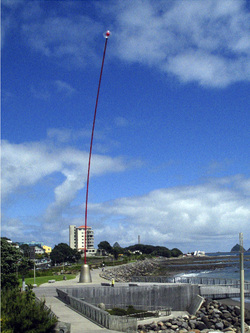You Are Not Alone - MATES Cafe New Plymouth NZ
MATES Cafe is a network of everyday people of all cultures and ethnicity (including teens, elders and lgbt+) who are trained to meet with a person in crisis or isolation at a local cafe, and provide emotional support and encouragement.
MATES Cafe will empower your life so you can in turn empower the lives of others in need.
MATES are here:
To help people of all ages, gender, culture, ethnicity and personal beliefs through the challenges and tough times of life including relationship breakdown, depression, anxiety, loss and grief, bullying, loneliness and isolation. MATES are trained to be there for someone in need and helping them through a point of crisis in their life. It's not about therapy, fixing or giving advice, just simply listening and helping them to find new direction in their life.
New Plymouth NZ - MATES Cafe Network
|
A Call-Out to ALL!
Can You Spare ONE Hour of Your Life to Save a Life? MATES Cafe is purely about saving lives. Do you realise one person completes suicide every 13 hours in New Zealand because they are unable to stand the emotional trauma they are undergoing, often caused by relationship breakdown. Every 4 minutes 1 New Zealander has suicidal thoughts and needs a MATE to turn to. MATES need your help to drastically lower the suicide rate... are you with us? Saving someones life can be to either:
|
New Plymouth

New Plymouth is the major city of the Taranaki Region on the west coast of the North Island of New Zealand. It is named after Plymouth, Devon, England, from where the first English settlers migrated. The New Plymouth District includes New Plymouth City and several smaller towns. The New Plymouth District is the 15th largest district (out of 73) in New Zealand, and has 1.7 percent of New Zealand's population.[1] The district has a population of 68,901 — nearly two thirds of the total population of the Taranaki Region. This includes New Plymouth City (53,000), Waitara (6,288), Inglewood (3,090), Oakura (1,359), Okato (531) and Urenui (429).[2]
The city itself is a service centre for the region's principal economic activities including intensive pastoral activities (mainly dairy farming) as well as oil, natural gas and petrochemical exploration and production. It is also the region's financial centre as the home of the TSB Bank (formerly the Taranaki Savings Bank), the largest of the remaining non-government New Zealand-owned banks.
Notable features are the botanic gardens (e.g. Pukekura Park), the 11 km (6.8 mi) Coastal Walkway alongside the Tasman Sea, the Len Lye-designed 45-metre-tall (148 ft) artwork known as the Wind Wand, Paritutu Rock, and views of Mount Taranaki/Egmont.
As described under awards, New Plymouth won multiple awards in 2008. The city was in 2010 chosen as one of two walking & cycling "Model Communities" by the government. Based on New Plymouth's already positive attitude towards cyclists and pedestrians, the city received $3.71m to invest into infrastructure and community programs to boost walking and cycling.[3]
It is also noted for being a coastal city with a mountain within 30 minutes drive, where residents and visitors to New Plymouth can snowboard, ski, water ski and surf all in the same day.
In 1828 Richard "Dicky" Barrett (1807–47) set up a trading post at Ngamotu after arriving on the trading vessel Adventure. Barrett traded with the local Māori and helped negotiate the purchase of land from them on behalf of the New Zealand Company. Settlers were selected by the Plymouth Company, which was set up to attract emigrants from the West Country of England, and which took over land initially purchased by the New Zealand Company. The first of the town’s settlers arrived on the William Bryan, which anchored off the coast on 31 March 1841. A series of disputes over ownership and settlement of land developed between Māori and settlers soon after and New Plymouth became a fortified garrison town in 1860–1861 as more than 3500 Imperial soldiers, as well as local volunteers and militia, fought Māori in the First Taranaki War.
New Plymouth Province The New Zealand Constitution Act 1852 created the New Plymouth Province, with a Provincial Council given jurisdiction over an area of 400,000ha. Five years later the name of the province changed to Taranaki Province. The province was abolished in 1876.
Borough/City of New Plymouth A Town Board was formed in 1863 and in August 1876 the town was constituted as a borough. Its new status did little to overcome some outside perceptions, however. In 1876 author E. W. Payton wrote that "all the great bustling 'cities' of the colony had a patronising way of trying to snub New Plymouth, referring to it in such derogatory terms as the dullest hole in the colony ... nothing whatever to do there... I find a great liking for this 'slow, old hole' ... it is a quiet, unassuming place and has not done so much to attract immigrants and settlers by exaggerating reports, as some districts have done."[4]
The Fitzroy Town District was merged with New Plymouth borough in August 1911; Vogeltown, Frankleigh Park and Westown were added a year later, followed by St Aubyn-Moturoa. By 1913 the town had a population of 7538. Seafront land was added in 1931 and 1941; land acquired on Omata Rd was added in 1955 and in 1960 large areas including land to the south of Paritutu, as well as Hurdon, Ferndale and Huatoki were included, as well as land straddling Mangorei Rd between the Henui Stream and Waiwakaiho River.
New Plymouth was declared a city in 1949.
The city itself is a service centre for the region's principal economic activities including intensive pastoral activities (mainly dairy farming) as well as oil, natural gas and petrochemical exploration and production. It is also the region's financial centre as the home of the TSB Bank (formerly the Taranaki Savings Bank), the largest of the remaining non-government New Zealand-owned banks.
Notable features are the botanic gardens (e.g. Pukekura Park), the 11 km (6.8 mi) Coastal Walkway alongside the Tasman Sea, the Len Lye-designed 45-metre-tall (148 ft) artwork known as the Wind Wand, Paritutu Rock, and views of Mount Taranaki/Egmont.
As described under awards, New Plymouth won multiple awards in 2008. The city was in 2010 chosen as one of two walking & cycling "Model Communities" by the government. Based on New Plymouth's already positive attitude towards cyclists and pedestrians, the city received $3.71m to invest into infrastructure and community programs to boost walking and cycling.[3]
It is also noted for being a coastal city with a mountain within 30 minutes drive, where residents and visitors to New Plymouth can snowboard, ski, water ski and surf all in the same day.
In 1828 Richard "Dicky" Barrett (1807–47) set up a trading post at Ngamotu after arriving on the trading vessel Adventure. Barrett traded with the local Māori and helped negotiate the purchase of land from them on behalf of the New Zealand Company. Settlers were selected by the Plymouth Company, which was set up to attract emigrants from the West Country of England, and which took over land initially purchased by the New Zealand Company. The first of the town’s settlers arrived on the William Bryan, which anchored off the coast on 31 March 1841. A series of disputes over ownership and settlement of land developed between Māori and settlers soon after and New Plymouth became a fortified garrison town in 1860–1861 as more than 3500 Imperial soldiers, as well as local volunteers and militia, fought Māori in the First Taranaki War.
New Plymouth Province The New Zealand Constitution Act 1852 created the New Plymouth Province, with a Provincial Council given jurisdiction over an area of 400,000ha. Five years later the name of the province changed to Taranaki Province. The province was abolished in 1876.
Borough/City of New Plymouth A Town Board was formed in 1863 and in August 1876 the town was constituted as a borough. Its new status did little to overcome some outside perceptions, however. In 1876 author E. W. Payton wrote that "all the great bustling 'cities' of the colony had a patronising way of trying to snub New Plymouth, referring to it in such derogatory terms as the dullest hole in the colony ... nothing whatever to do there... I find a great liking for this 'slow, old hole' ... it is a quiet, unassuming place and has not done so much to attract immigrants and settlers by exaggerating reports, as some districts have done."[4]
The Fitzroy Town District was merged with New Plymouth borough in August 1911; Vogeltown, Frankleigh Park and Westown were added a year later, followed by St Aubyn-Moturoa. By 1913 the town had a population of 7538. Seafront land was added in 1931 and 1941; land acquired on Omata Rd was added in 1955 and in 1960 large areas including land to the south of Paritutu, as well as Hurdon, Ferndale and Huatoki were included, as well as land straddling Mangorei Rd between the Henui Stream and Waiwakaiho River.
New Plymouth was declared a city in 1949.
Realizing our full human potential... Imagine what we can achieve together!
M8TZ - Recreating Community: Worldwide | New Zealand | Australia | United States | United Kingdom | China | Canada | India
Refer Someone | Consultations | Contact M8TZ Cafe: | Policies | © MATES 2023 All rights reserved.
Refer Someone | Consultations | Contact M8TZ Cafe: | Policies | © MATES 2023 All rights reserved.




